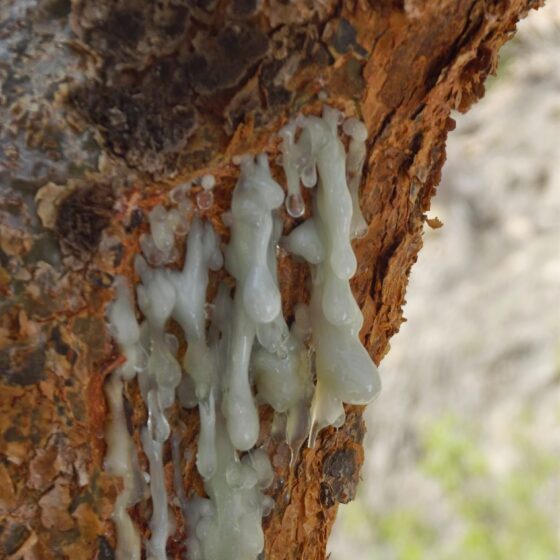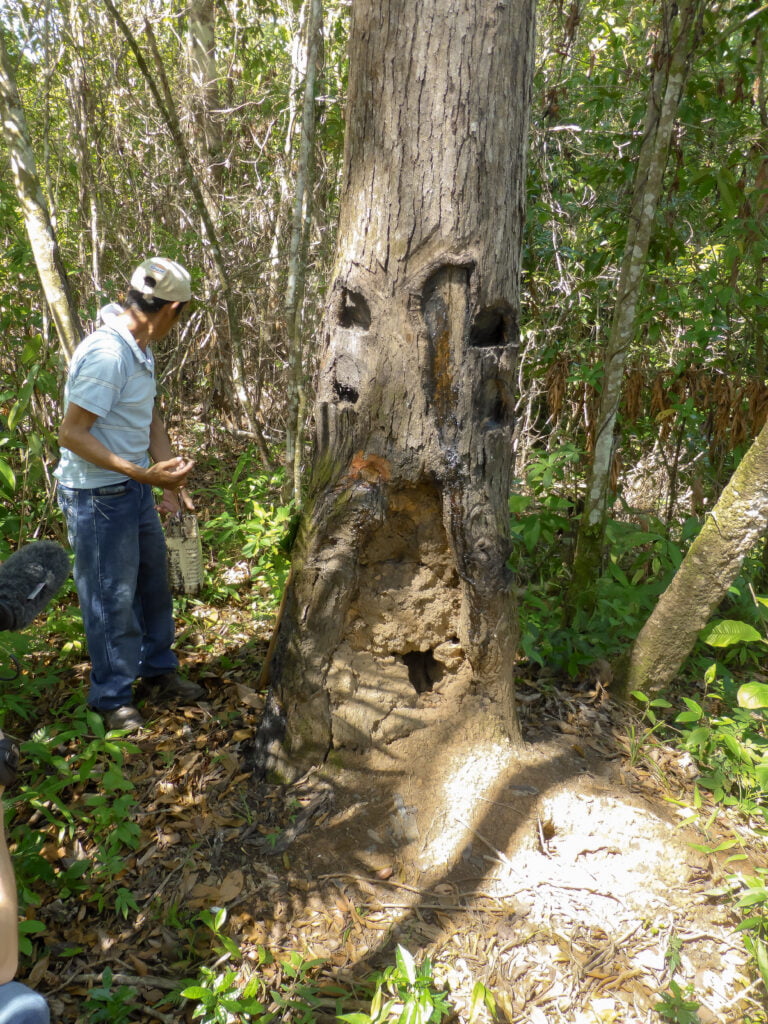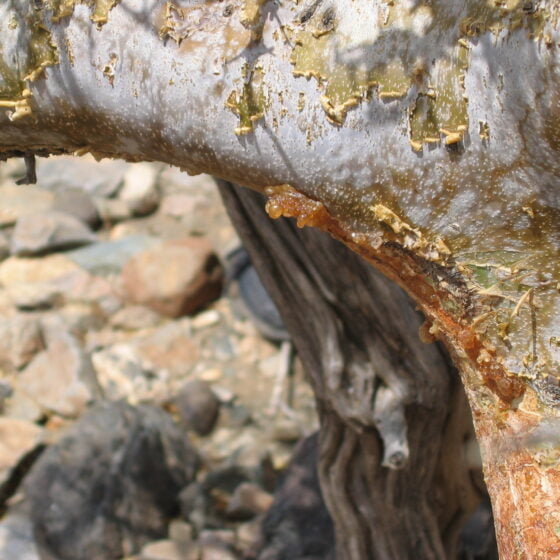
Styrax Honduras
Liquidambar styraciflua
General data
Harvest Calendar
- J
- F
- M
- A
- M
- J
- J
- A
- S
- O
- N
- D
Product details Our added value
Albert Vieille had been deeply involved with the Natural Resources Stewardship Circle for several years, actively supporting that association’s initiatives in the styrax supply chain in Honduras. NRSC project included establishing and implementing good forest management practices to ensure the supply chain’s sustainability.
The NRSC also helped in the creation of an anthropological preserve in 2016 to safeguard the lands and activities of the Pech community with the government.
In early 2018, Albert Vieille financed a photovoltaic solar system in the APARFSS (association of styrax producers) building, which previously had no electricity.
We process the gum ourselves at our production center in Seville.
Fragrance side
Styrax resinoid is often used in the base note of oriental scents or in leather accords. It is also often used in conjunction with opulent flowers such as jasmine or tuberose in feminine florientals.
About
Styrax is a tree belonging to the Liquidambar genus. Its name comes from the Latin liquidus and the Arabic ambar, meaning “liquid amber” in reference to the very fragrant gum it exudes when cut. Two varieties of styrax are used in perfumery: Asian styrax, or Liquidambar orientalis, and American styrax, or Liquidambar styraciflua, which we offer. This monumental tree grows naturally in dense tropical forests in the Olancho Mountains of Honduras. It is also found in Guatemala, Mexico, and El Salvador.
In ancient Egypt – 3,000 B.C. – it seems the Egyptians used styrax resin to embalm bodies. Traces of styrax have also been detected in Incan tombs dating from the 14th and 15th centuries, due to the presence of cinnamic acid and styrene, characteristic molecules of resin. Styrax was widely used at one time in the Americas to treat lung infections and wounds. It was introduced into Europe by Cortés in the 15th century and imported in large quantities for its fragrance and medicinal qualities.
Styrax is harvested from April to November, and only by the Pech tribe in Honduras. The collectors make cavity-shaped incisions in the trunk to initiate the flow and in which the precious amber liquid accumulates. A mature tree produces between six and eight kilograms of styrax resin. One month after the incision, the styrax is collected. It is then filtered to remove impurities before being turned into essential oil by steam distillation, and into resinoid by ethanol extraction.
Our added value
Albert Vieille had been deeply involved with the Natural Resources Stewardship Circle for several years, actively supporting that association’s initiatives in the styrax supply chain in Honduras. NRSC project included establishing and implementing good forest management practices to ensure the supply chain’s sustainability.
The NRSC also helped in the creation of an anthropological preserve in 2016 to safeguard the lands and activities of the Pech community with the government.
In early 2018, Albert Vieille financed a photovoltaic solar system in the APARFSS (association of styrax producers) building, which previously had no electricity.
We process the gum ourselves at our production center in Seville.
Fragrance side
Styrax resinoid is often used in the base note of oriental scents or in leather accords. It is also often used in conjunction with opulent flowers such as jasmine or tuberose in feminine florientals.
About
Styrax is a tree belonging to the Liquidambar genus. Its name comes from the Latin liquidus and the Arabic ambar, meaning “liquid amber” in reference to the very fragrant gum it exudes when cut. Two varieties of styrax are used in perfumery: Asian styrax, or Liquidambar orientalis, and American styrax, or Liquidambar styraciflua, which we offer. This monumental tree grows naturally in dense tropical forests in the Olancho Mountains of Honduras. It is also found in Guatemala, Mexico, and El Salvador.
In ancient Egypt – 3,000 B.C. – it seems the Egyptians used styrax resin to embalm bodies. Traces of styrax have also been detected in Incan tombs dating from the 14th and 15th centuries, due to the presence of cinnamic acid and styrene, characteristic molecules of resin. Styrax was widely used at one time in the Americas to treat lung infections and wounds. It was introduced into Europe by Cortés in the 15th century and imported in large quantities for its fragrance and medicinal qualities.
Styrax is harvested from April to November, and only by the Pech tribe in Honduras. The collectors make cavity-shaped incisions in the trunk to initiate the flow and in which the precious amber liquid accumulates. A mature tree produces between six and eight kilograms of styrax resin. One month after the incision, the styrax is collected. It is then filtered to remove impurities before being turned into essential oil by steam distillation, and into resinoid by ethanol extraction.
Other type of extracts
(Balsamic)


